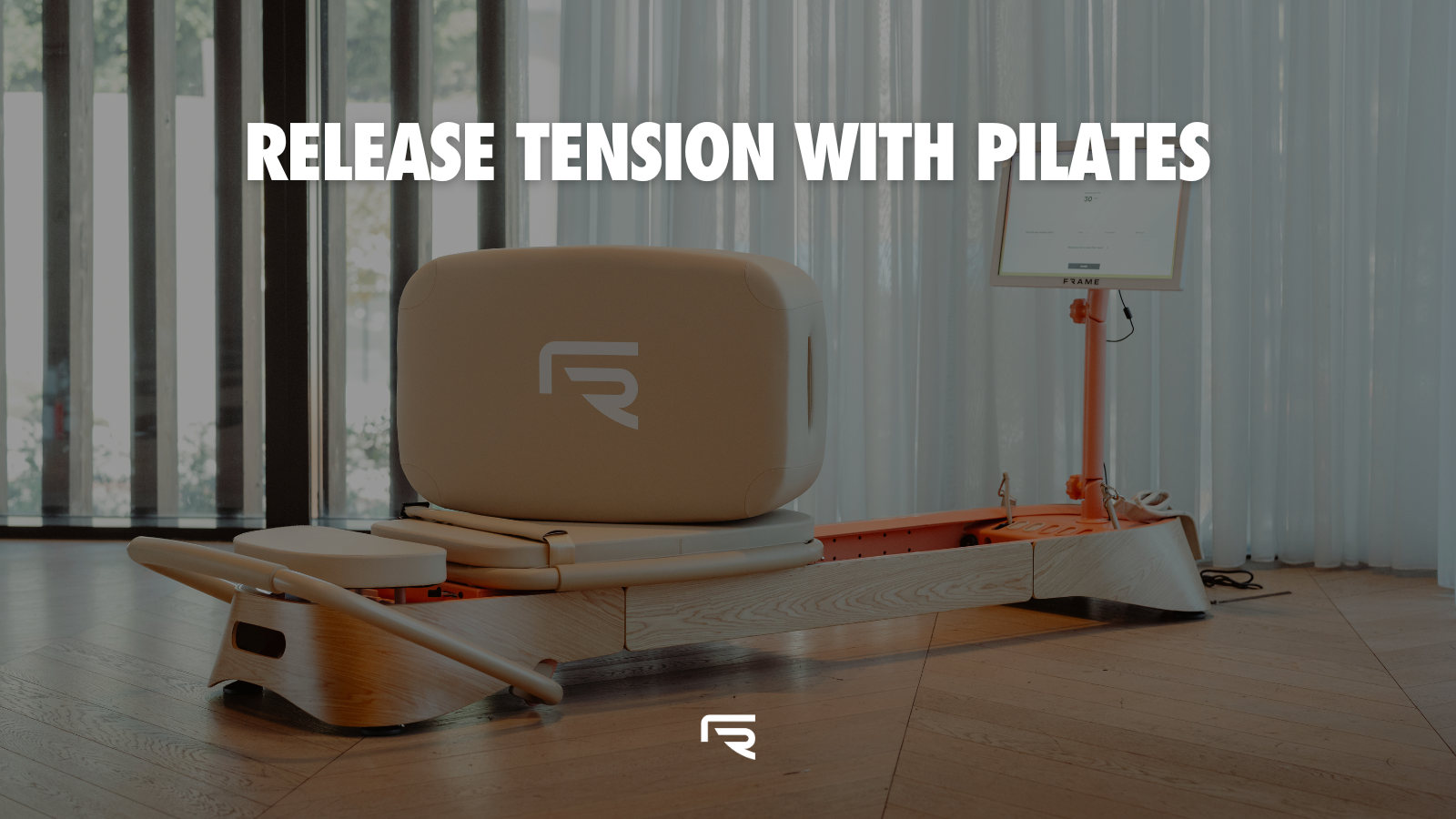Release Tension With Pilates

Stress is inevitable in today's fast-paced world, where constant notifications keep us on high alert. A symphony of cell phone sounds plays nonstop in our minds as we struggle to meet daily demands. A study from the Atlantic notes that the average cell phone user receives 80 advertisements, sale reminders, news alerts, social-media notifications, and other pop-up messages a day. The phone we often wish to set aside is our primary connection to work, family, and personal relationships.
Recent studies show that workplace burnout can impair short-term memory, attention, and other cognitive processes essential for daily tasks. Additionally, research indicates that heavy social media users may have reduced grey matter in some regions of their brains, particularly those responsible for attention control. As a result, we often feel overwhelmed and desire to relieve our stress, yet lack a solid plan to support that relief.
Pilates offers a release from the stress surrounding us. It provides an opportunity to cleanse the mind and connect with our current state of well-being. Through mindful movement and various positions, Pilates creates a space for the mind to unwind and the body to realign. By focusing on breathwork, we can better understand our emotions and consciously regain control over overwhelming feelings.
Regardless of your fitness level, Pilates allows everyone the chance to step away from chaos and embrace a healthier lifestyle. Stress management equips you with tools to reset and recalibrate your internal alarm system, helping your mind and body adapt and become more resilient. Without these practices, your body may remain in a constant state of alertness. Over time, chronic stress can lead to serious health issues, which we should all aim to avoid.
This month, we have selected our favorite techniques to help you manage stress and cultivate healthier habits as you seek inner peace in an overstimulating world.
-
Set an intention: Take a moment to set an intention for the day ahead. This could be a specific goal, cultivating gratitude, or simply being present in the moment. Having a clear intention can help guide your energy and combat any negative feelings or difficult emotions as you start your day. It fosters a positive and proactive mindset, steering your daily actions and decisions toward a more fulfilling life. Additionally, setting intentions can improve mental health by encouraging mindfulness and a focus on the present. As your day begins, take a moment for this important practice.
-
Mindful breathing: A key element of Pilates is breathwork, which helps develop breath control and increases oxygen intake, allowing you to thrive. Stress can lead to fast, shallow breathing, triggering a fight or flight response. Practicing breathwork counters this by promoting calmness and balance. To start, lie flat on your back on the Pilates mat, with a towel or cushion under your head for comfort. Bend your knees and keep your feet flat on the mat, hip-width apart, or sit in a comfortable position. Place one hand on your chest and the other on your abdomen. Inhale deeply through your nose for a count of four, letting your abdomen rise while keeping your chest still. Then, exhale gently through your mouth for a count of six, allowing your abdomen to fall. Aim for longer exhales to enhance relaxation. After your last exhale, pause to notice how your body feels, and when you’re ready, gently roll to your side and push yourself up into a seated position.
-
Stretch relief: Pilates is known to release stress through movement. It can also help improve anxiety symptoms by increasing blood and oxygen flow to the brain, relaxing the muscles, and enhancing sleep quality, as noted in a 2015 study published in “Procedia Social and Behavioral Sciences”. One simple Pilates movement for stress relief is the "Cat-Cow Stretch." This exercise promotes relaxation and mobility in the spine while encouraging mindful breathing. To perform the Cat-Cow Stretch, start on your hands and knees in a tabletop position, ensuring that your wrists are aligned under your shoulders and your knees are aligned under your hips. Exhale slowly as you round your spine towards the ceiling. Tuck your chin to your chest and draw your navel towards your spine, feeling a stretch in your back. Pause for a moment and breathe deeply, releasing any tension. Inhale deeply as you arch your back, allowing your belly to drop toward the mat while lifting your head and tailbone toward the ceiling. Feel a gentle stretch in your chest and abdomen, keeping your breath smooth. After completing several cycles of this stretch, return to a neutral spine. Take a moment to notice how your body feels and enjoy the relaxation.
-
Feedback and reflection: After each breathwork session and stretch, take a moment to reflect on what felt good and what felt challenging. Consider keeping a journal to track your progress, thoughts, and areas where you feel more aware of your body. Use this skill to tap into your feelings as you move through your day. By becoming more in touch with your physical self, you can better understand what your body is telling you and what it needs. Is there a name that flashes on your phone with a notification that makes you feel uneasy? Make a mental note of that and consider limiting your interactions with that individual. If you cannot do so because of work, take this newfound awareness as a sign to start looking for new job opportunities. Your body is guiding you toward a better quality of life by encouraging you to make these minor changes along the way.
Reduce stress this month by making small lifestyle changes that enhance your ability to cope with challenges while maintaining your well-being. This paves the way for a healthier you and a more fulfilling life ahead!

